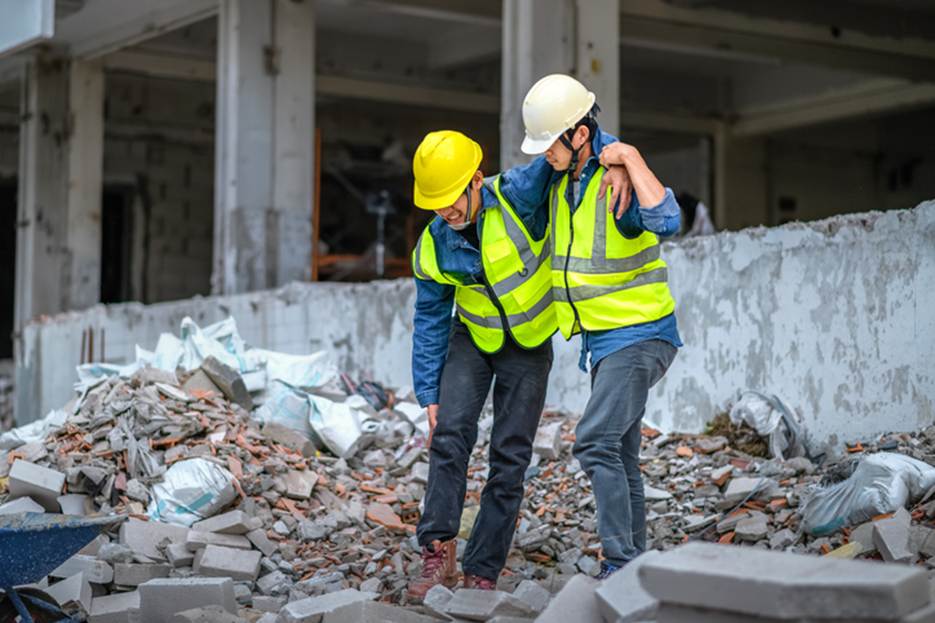
Falls from Heights: Construction Site Liability
One Slip Can Change a Construction Worker’s Life Forever
You don’t forget the sound of someone falling. It’s fast, sharp, and final. For New York construction workers, that sound happens more often than anyone wants to admit.
Falls from scaffolds, ladders, or rooftops don’t just leave bruises. They leave lives permanently changed, broken bones, spinal injuries, traumatic brain damage. Some never walk again. Some don’t survive at all.
At Horn Wright, LLP, our personal injury attorneys have represented workers who fell from scaffolds in Brooklyn, ironworkers who slipped off beams in Queens, and day laborers injured when safety rails gave way in Manhattan high-rises. These accidents are rarely “bad luck.” They’re the result of corners cut, safety ignored, and companies that fail to protect the very people building this city.
Common Causes of Height-Related Accidents on New York Sites
Every job site in New York comes with hazards, but falls from height top the list of fatal injuries. What’s worse, most of these falls could have been prevented.
Common causes include:
- Improperly installed scaffolding or missing guardrails.
- Defective ladders that collapse under normal use.
- Unsafe roofing work, often without required harnesses or lifelines.
- Falling debris striking workers below, knocking them off balance.
- Rushed or untrained workers pressured to move fast without equipment checks.
Even in smaller projects, renovations, warehouse installs, or maintenance on older buildings, the same patterns repeat. In Midtown, we’ve seen painters working five stories up without secure anchors. In the Bronx, scaffolds built from mismatched parts collapse before noon. When employers ignore basic safety, workers end up paying with their health.

Safety Regulations Designed to Prevent Deadly Falls
Falls aren’t accidents in the truest sense. They’re violations of rules that already exist to keep people safe. Both federal OSHA standards and New York State Labor Laws have clear mandates for protecting workers at height.
- OSHA 29 CFR 1926.501 requires fall protection systems, guardrails, safety nets, or harnesses, whenever employees work six feet or more above a lower level.
- New York Labor Law § 240, often called the “Scaffold Law,” holds property owners and contractors strictly liable when safety devices fail or aren’t provided.
- Labor Law § 241(6) requires compliance with specific Industrial Code rules about safe working platforms, flooring, and barriers.
These laws recognize a simple truth: workers can’t always protect themselves. The people in charge, the contractors, site managers, and property owners, are responsible for creating a safe environment.
When they don’t, the law gives workers the right to hold them accountable.
How Liability Works in New York Construction Fall Cases
New York’s Labor Laws make it one of the strongest worker-protection states in the country. But the system is still complex.
Under Labor Law § 240, liability falls on owners, contractors, or agents who fail to provide adequate safety devices. This is strict liability, meaning the worker doesn’t need to prove negligence, only that the required protection was missing or defective. That law has saved countless workers from financial ruin.
But not every fall qualifies. Some cases require showing that the accident involved elevation-related risks. Others fall under Labor Law § 200 (general negligence) or § 241(6) (violations of safety codes). In federal construction projects, the Occupational Safety and Health Act and sometimes the Federal Tort Claims Act (FTCA) may also apply.
The challenge isn’t knowing if the law exists, it’s knowing how to apply it correctly. That’s where experienced legal guidance becomes critical.
Vermont Construction Law Provides Narrower Worker Protections Than New York
If a construction worker falls in Vermont, their legal options look very different from someone injured in New York.
- Vermont lacks a strict liability rule like New York’s Scaffold Law. Workers must prove negligence instead of simply showing missing or defective safety equipment.
- Workers’ compensation is often the only available remedy, limiting financial recovery to medical costs and partial wage loss, no pain and suffering.
- Comparative negligence is stricter. If a worker is found more than 50% at fault, recovery can be barred entirely.
That difference is enormous. A roofer who falls because a contractor skipped safety harnesses could win full damages in Brooklyn, but in Burlington, the same worker might receive only partial wage replacement.
New York’s strong protections exist for a reason: construction here is dangerous, and workers deserve more than the bare minimum.
Evidence That Proves Employer Negligence in Fall Cases
When a fall happens, employers often rush to shift blame, claiming workers were careless or ignored training. But evidence tells the real story.
Strong cases rely on:
- Photos and videos of missing guardrails, broken ladders, or unsafe platforms.
- Witness statements from coworkers who saw safety violations ignored.
- OSHA inspection records showing prior safety citations.
- Medical reports linking injuries directly to the fall.
- Expert testimony reconstructing how the accident occurred.
Under New York’s Labor Law § 240, even a single missing safety line or unstable scaffold plank can establish liability. And under federal law, repeated OSHA violations can prove negligence patterns strong enough to support additional claims under the FTCA.
Time matters here. The longer workers wait, the faster sites are repaired, evidence disappears, and employer defenses strengthen. That’s why acting quickly after a fall is crucial.
Legal Avenues for Financial Recovery After Fall Injuries
Falling from height doesn’t just cause physical injuries, it causes financial collapse. Hospital stays, surgeries, rehab, and lost income pile up fast. Fortunately, New York law allows multiple paths for recovery.
Victims can pursue:
- Workers’ compensation, covering medical expenses and a percentage of lost wages.
- Labor Law § 240 and § 241(6) claims, which allow full recovery, including pain, suffering, and loss of future income, against property owners or contractors.
- Third-party lawsuits, when defective equipment or negligent subcontractors contribute to the fall.
- Wrongful death claims, giving families the right to recover for funeral costs, lost support, and emotional loss under EPTL § 5-4.1.
In federal projects, claims under the FTCA or Federal Employers’ Liability Act (FELA) may also apply, depending on who controls the site.
Each path has strict filing deadlines. Missing them can erase entire cases, so having a lawyer who understands how to coordinate state, federal, and workers’ comp claims is essential.
Horn Wright, LLP, Protects Workers Injured in Falls from Heights
Construction builds New York, but it also breaks too many workers along the way. A single missed anchor point or weak scaffold board can end a career, or a life.
At Horn Wright, LLP, our personal injury attorneys stand with injured construction workers and their families. We’ve fought against developers, general contractors, and insurance companies that try to avoid responsibility when safety rules are ignored.
We know the laws, we know the worksites, and we know how to hold negligent employers accountable. If you’ve suffered a fall from height, don’t let your case disappear while companies move on. The law is on your side, but only if you act before it’s too late.

What Sets Us Apart From The Rest?
Horn Wright, LLP is here to help you get the results you need with a team you can trust.
-
Client-Focused ApproachWe’re a client-centered, results-oriented firm. When you work with us, you can have confidence we’ll put your best interests at the forefront of your case – it’s that simple.
-
Creative & Innovative Solutions
No two cases are the same, and neither are their solutions. Our attorneys provide creative points of view to yield exemplary results.
-
Experienced Attorneys
We have a team of trusted and respected attorneys to ensure your case is matched with the best attorney possible.
-
Driven By Justice
The core of our legal practice is our commitment to obtaining justice for those who have been wronged and need a powerful voice.

